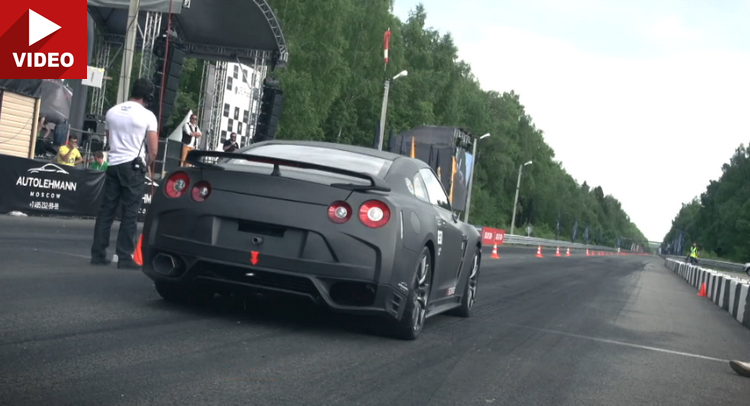Just like in Part 1, the Nissan GT-R seems to be the best choice when it comes to heavy after-market work. The reasons for that are fairly obvious.
The GT-R was build by Nissan in order to compete with pretty much anything on the road. They did however dial back its performance because of reasons such as fuel economy but let the “door” slightly open, because they knew that a car that can get off the line this quickly, will receive quite a few mods from the drag racing community during its lifetime.
Currently, the Nissan GT-R packs a turbocharged 3.8 liter V6 delivering 550PS (600 in the NISMO version), which thanks to its all-wheel drive and lightning fast 6 speed automatic gearbox will get you from 0 to 62 mph (100km/h) in just 2.7 seconds.
That just goes to show how brilliant the electronics are on this car, considering that it weighs a little over 1,815 kg. So once you’ve got the GT-R, all you need to do is remap the ECU, give it a larger turbocharger, sports exhaust and so on, which will eventually get you over the 1,000 HP mark.
Just like 4 of the 5 cars that set the fastest times in Part 1 of Dragtimes 2014 Top 10 were GT-Rs, so are the next four. In fact, 2nd place went to the MK.2 AMS Alpha tuned GT-R (1st place – fastest time) and its 1,600 HP engine. It reached 340.58 km/h (216.6 mph) and it only needed half a mile to do it.
The top speed was reached by a 2,000 HP Saleen S7 Competition Total Race that got up as high as 346.15 km/h (215.09 mph). We can only wonder what their real top speeds are if you gave them unlimited space to just floor it and see what happens.







